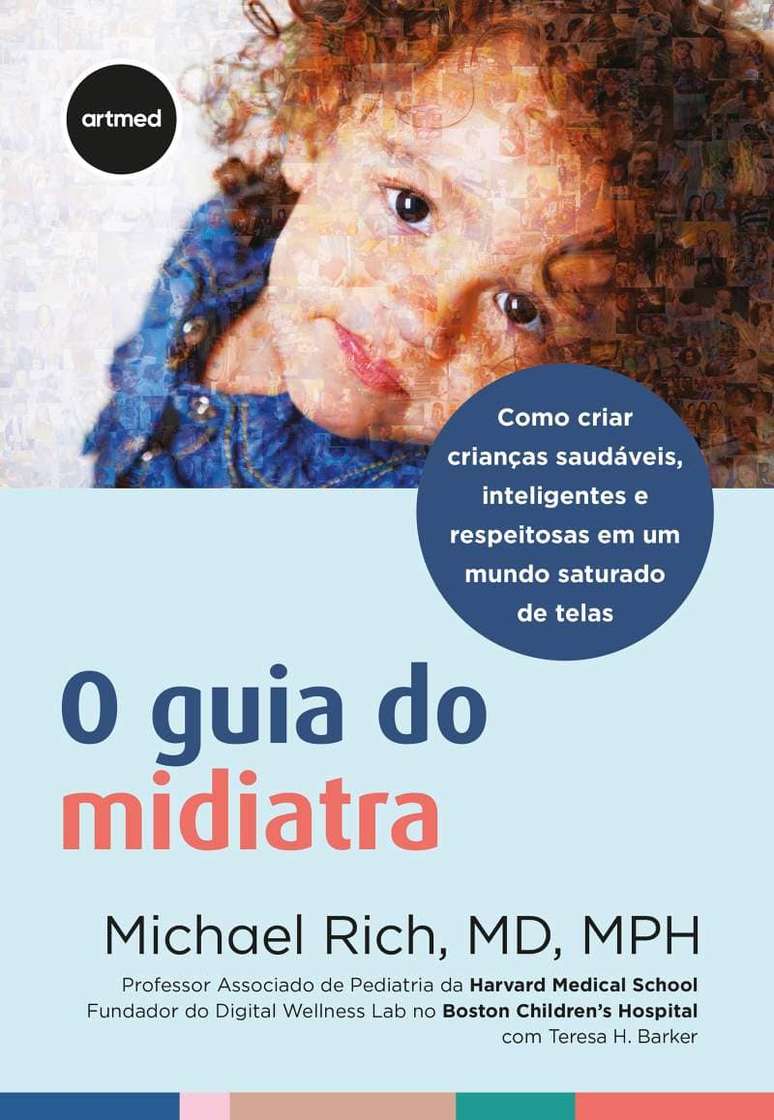Michael Rich criticizes ‘compelling need’ for strict rules and proposes ‘Internet mastery’ as key to children’s digital health
Summary
Michael Rich, a Harvard pediatrician, argues that instead of banning screens, parents should educate and monitor, promoting critical thinking and “internet mastery” so that children and adolescents use technology responsibly and healthily.
The debate on the impact of screens on the health of children and adolescents often focuses on fear and the search for a total ban. However, Michael Rich, a pediatrician and researcher at Harvard Medical School Teaching Hospital, offers a radically different approach in his book “The Mediatrician’s Guide: How to Raise Healthy, Intelligent, Respectful Children in a Screen-Saturated World.” In an interview with Terra, he argued that parents should monitor and guide usage, preparing young people to navigate the digital world with autonomy and responsibility, rather than imposing rigid rules or opting solely to ban screens. According to him, critical thinking is the best protection tool. The researcher warns that the exaggerated concern for “Internet safety” must be replaced by the pursuit of “Internet mastery”, since this is the environment in which children live and must be competent. Read key excerpts below:
What is the main focus of your work in relation to children, adolescents and the digital environment?
My main message is that children and adolescents have much to gain when they learn to manage digital environments critically and responsibly. We need less panic and more education in the debate about children and teenagers on the Internet. When we put all our energy into discussing Internet safety, we tell our children right from the start that the Internet is nothing but a danger. We should focus on mastering the Internet.
His book, The Midiatrician’s Guide, offers a counter-view to a total screen ban. Why is prohibition not the ideal path?
Well, first of all we must keep in mind that screens will not disappear from our lives. Starting from this, the book aims to break with the alarmist discourse, proposing paths of balance instead of fear. Going in the opposite direction to prohibitionism helps us teach that it is also possible to use technology in a healthy and safe way. Furthermore, one of the concerns related to this compelling need to prohibit is that it could harm the most vulnerable groups, for example LGBTQIA+ young people, those belonging to ethnic or linguistic minorities, who find people in online communities who listen to them, see them and welcome them.
If banning isn’t the answer, what should parents do? What is your advice?
I argue that, instead of imposing rigid rules, families embrace a path of orientation, active listening, co-participation and empathy. My work focuses on preparing children and adolescents to navigate the digital world with autonomy, responsibility and well-being. These factors are central to the perception of those responsible, whether family members or professionals, about when technology should be considered a problem and is hindering important things for children’s health and development. I translate this approach into 3 M’s: Model, Mentoring and Monitoring.
How do these 3 M’s work, in practical terms?
The first goal is to model, that is, to be the change we want to see. Educating well in the digital ecosystem is a process of establishing expectations, not simply imposing rules. The second point is mentoring, which involves closely monitoring children on their digital journey, not in a single conversation, but over the years, exchanging opinions without judgment. Finally, managers need to monitor young people’s digital presence, and for this to work, it is essential to speak up and explain why monitoring is important. I’ll make an analogy: Having a teenager’s social media passwords has the same effect as having the key to their bedroom door. He knows you can come in at any time, even when he’s not there.
Many families focus on limiting “screen time.” Is this the correct metric?
No. I recommend that the family arrangement goes beyond “screen time.” The focus should be on considering “what the screen is used for and what has been left undone because of it.” The simplistic solution of limiting screen time is not very productive; It is necessary to shed light on connection, presence and active education. This is a problem for parents too. They can’t just give a cell phone to a child without indicating what should be seen.

Can screen-addicted parents impose any kind of limits on their children? Doesn’t that seem hypocritical?
Absolutely yes. I believe that the first objective for those in charge is “to be the change we want to see”. They must model the behaviors they hope to see in their children. With 30 years of clinical practice and research, I and everyone who helped me write this book know that educating well in the world of screens is a process of setting expectations, not just imposing rules.
What do you think of the Brazilian law that bans cell phones in schools? Was it a mistake?
No. Considering that the role of school in a child’s life is twofold: learning content and learning to be an independent citizen of a society that he or she has created. Smartphones represent a distraction from the former and an opportunity for parents to try to solve the challenges that push children to develop the latter. I support legislative efforts in Brazil to remove smartphones from schools.
What is the best parental control tool available to families today?
When families ask me about parental controls, I often say the best tool is the one between your children’s ears. We need to stop being the police and start supporting their success. The monitoring process is already something that changes the behavior of children and adolescents in these environments.
What are the most common types of disorders caused by technology addiction?
I should clarify that our clinical observations over nearly a decade serving youth who have been harmed by interactive media use have indicated that addiction is a clinically inaccurate and therapeutically counterproductive pattern for problematic interactive media use (games, social media, pornography, video binges). Nicotine, alcohol, or opioid addiction is the use of a pleasurable but unnecessary substance, driven by the physiological desire to feel good and not feel bad when abstaining. Drug addicts are seen as weak in character, deserving of pity or punishment (or both). They point to the substance that affects them rather than taking responsibility for their behaviors. Our goal in treating addiction is abstinence/harm reduction.
Interactive media is a necessary resource for education, communication, connection and commerce today. Uncontrolled use is not motivated and does not lead to physiological changes. It is driven by psychological needs, from ADHD to anxiety, from autism to depression. Because interactive media is necessary, our therapeutic goal is not abstinence but self-regulation. We view binge eating disorder as a more accurate and useful model for problematic interactive media use. Given the problematic use of interactive media, users should be held accountable for what they did online, rather than inaccurately claiming that the device or platform caused them harm.
Source: Terra
Ben Stock is a lifestyle journalist and author at Gossipify. He writes about topics such as health, wellness, travel, food and home decor. He provides practical advice and inspiration to improve well-being, keeps readers up to date with latest lifestyle news and trends, known for his engaging writing style, in-depth analysis and unique perspectives.








